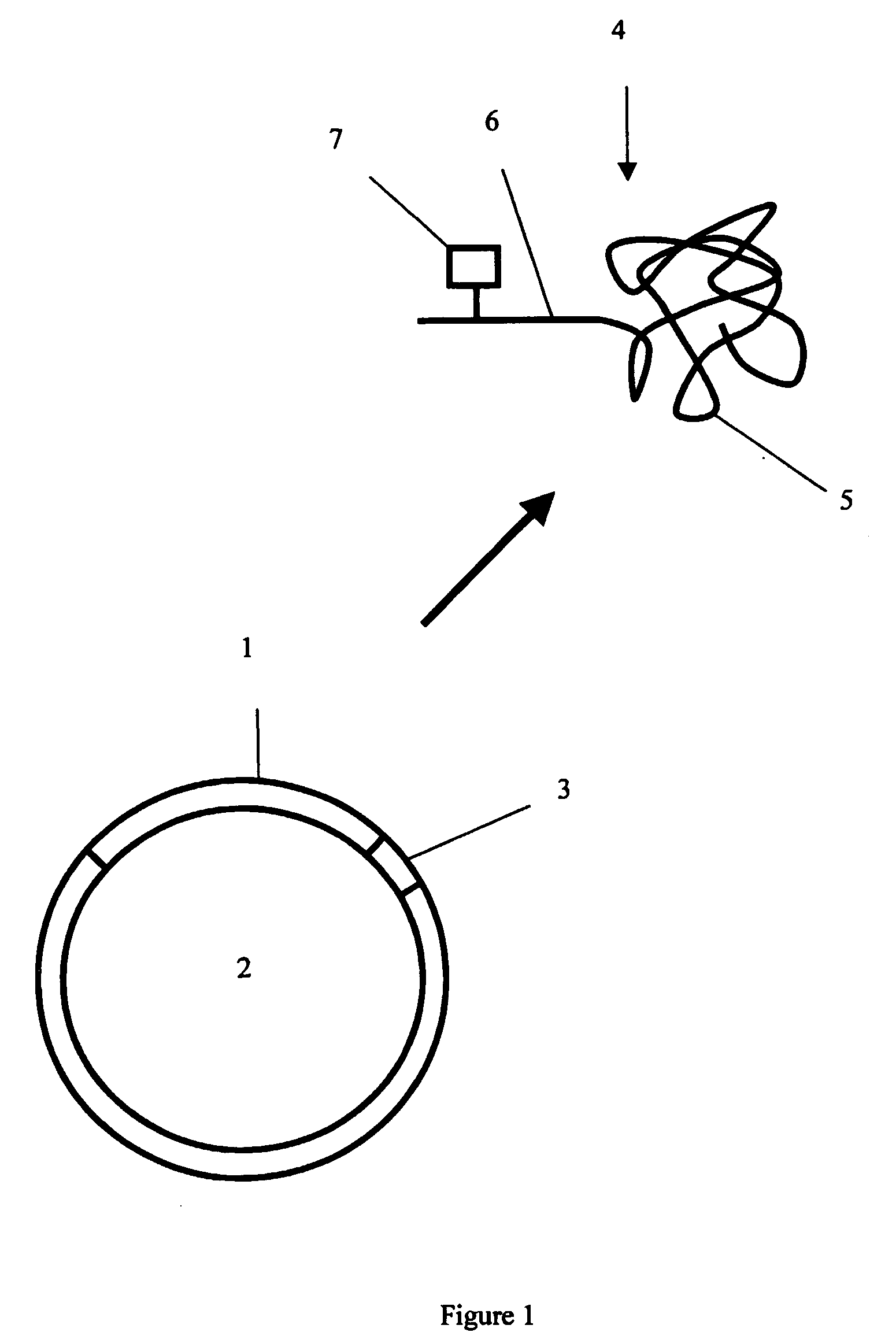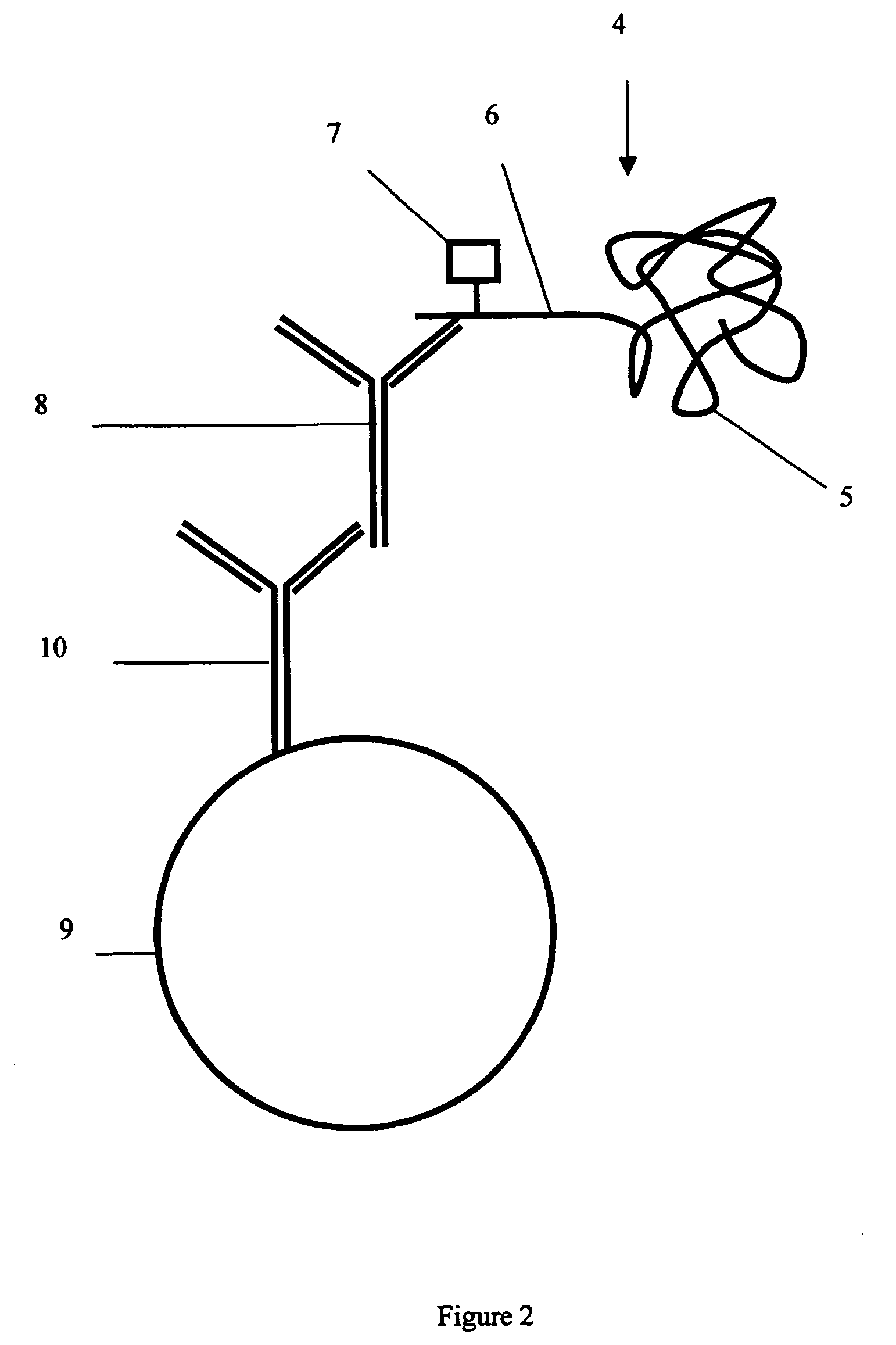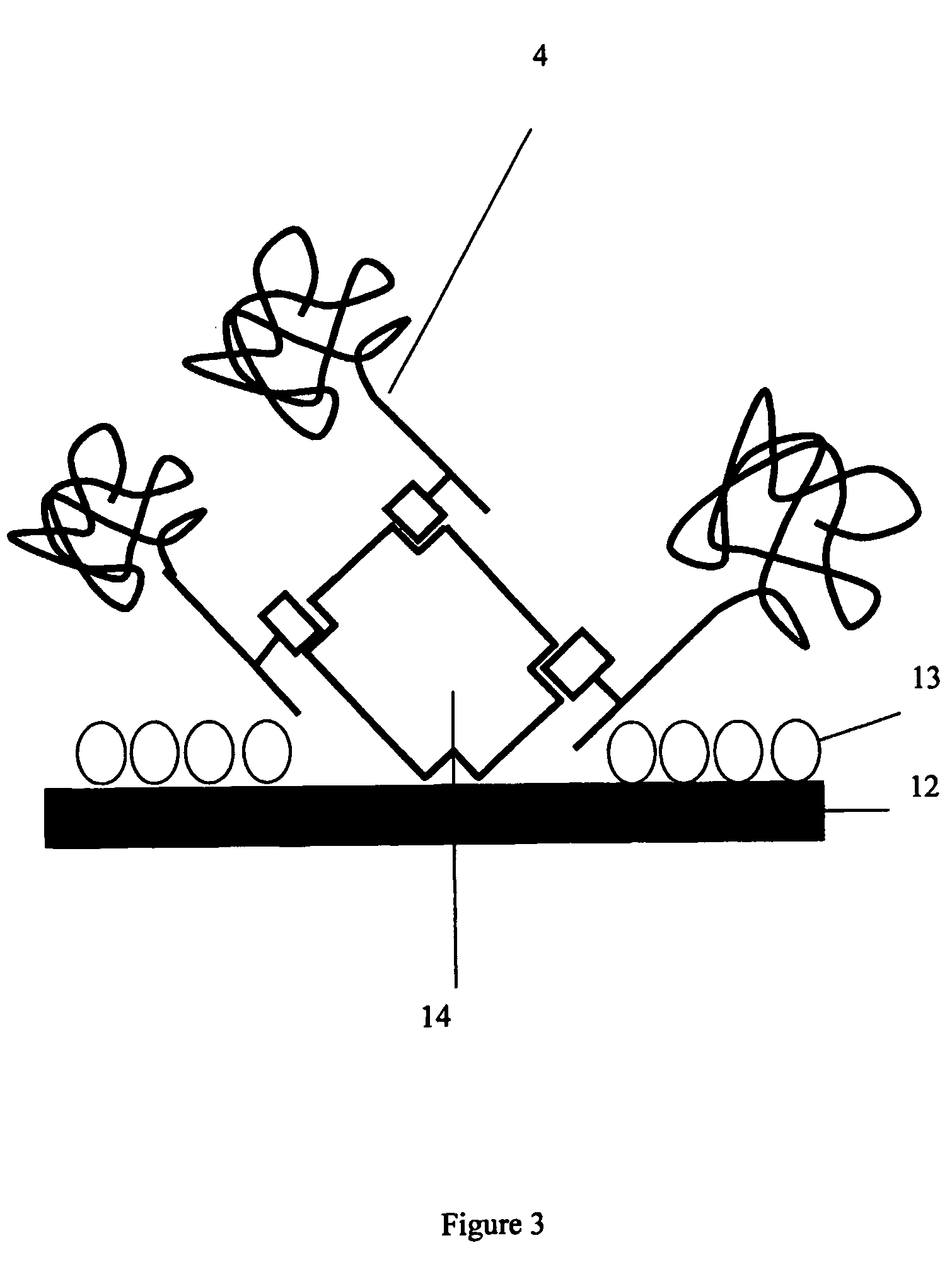Protein analysis
a protein and array technology, applied in the field of protein arrays, can solve the problems of non-porous surfaces, not as robust as solid surfaces, and elements tend to diffuse through the support material, and achieve the effects of eliminating the possible degradation of antibody's binding, high binding density, and reducing the possibility of degradation
- Summary
- Abstract
- Description
- Claims
- Application Information
AI Technical Summary
Benefits of technology
Problems solved by technology
Method used
Image
Examples
Embodiment Construction
Step 1: Cloning
[0108] All genes expressed were cloned from cDNA preparations directly into each of the pAN and pAC series of vectors (Avidity Inc, USA). These were used to express N-terminal and C-terminal fusion proteins respectively. The fusion peptide sequence used was SEQ ID NO 2 shown above. The insert sequences were confirmed by DNA sequencing performed on 377 (PE Corporation Inc) and MagaBase (Amersham Pharamcia Biotech) instruments using the manufacturer's methodologies.
Step 2: Expression
[0109] All fusion proteins were expressed under the control of the tightly repressed Trc promoter and is IPTG-inducible. All proteins were expressed in strain AVB100 (Avidity Inc, Colo., USA), an E. coli K12 strain [MC1061 ara D139 delta(ara-leu)7696 delta(lac)174 galU galK hsdR2(rK-mK+) mcrBl rpsL(Strr)] with a birA gene stably integrated into the chromosome.
[0110] Over expression of the BirA protein was accomplished by induction with L-arabinose. The stably integrated birA gene does ...
PUM
| Property | Measurement | Unit |
|---|---|---|
| Fraction | aaaaa | aaaaa |
| Length | aaaaa | aaaaa |
| Density | aaaaa | aaaaa |
Abstract
Description
Claims
Application Information
 Login to View More
Login to View More - R&D
- Intellectual Property
- Life Sciences
- Materials
- Tech Scout
- Unparalleled Data Quality
- Higher Quality Content
- 60% Fewer Hallucinations
Browse by: Latest US Patents, China's latest patents, Technical Efficacy Thesaurus, Application Domain, Technology Topic, Popular Technical Reports.
© 2025 PatSnap. All rights reserved.Legal|Privacy policy|Modern Slavery Act Transparency Statement|Sitemap|About US| Contact US: help@patsnap.com



